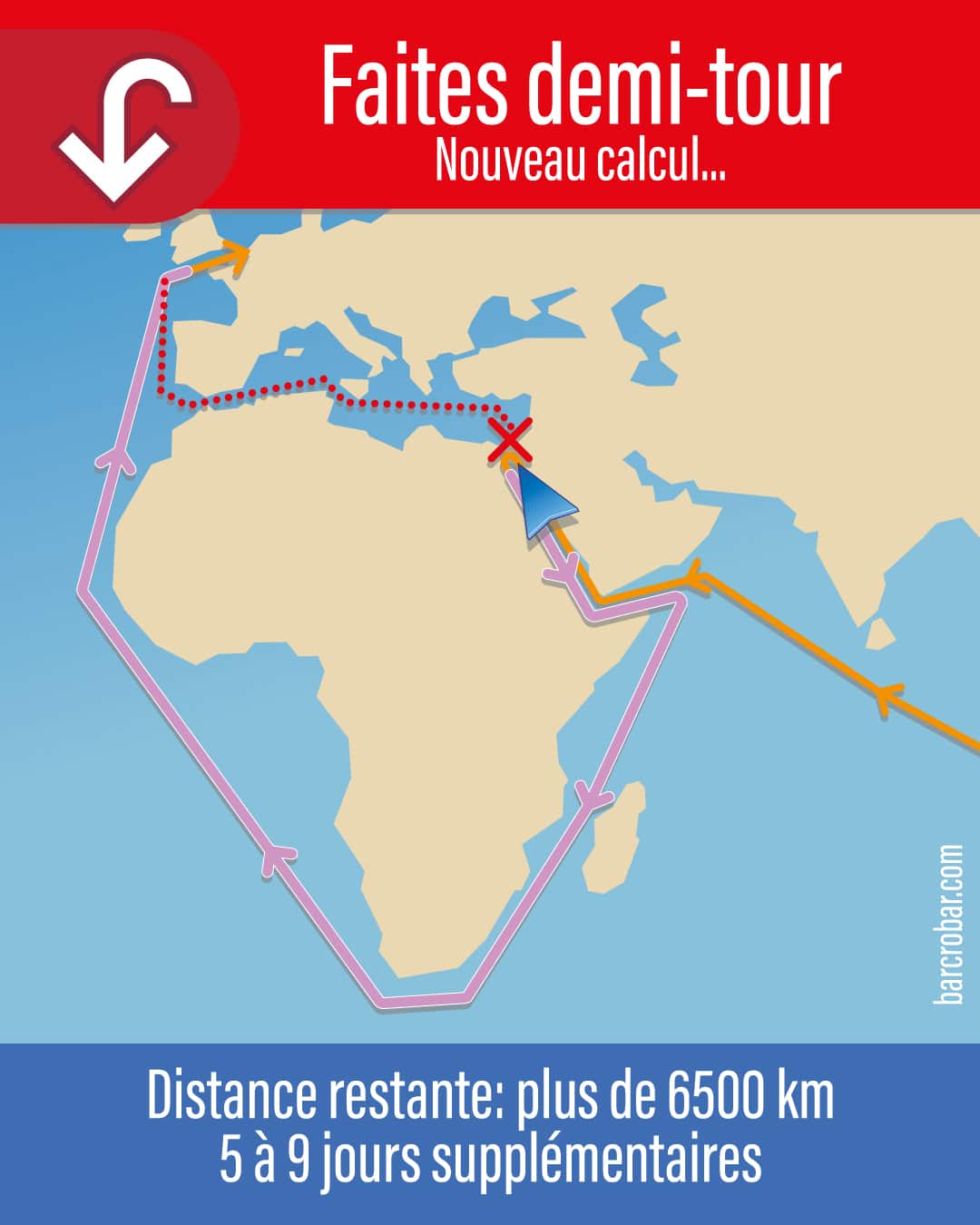Since Wednesday 24 March, the Suez Canal has been blocked by a container ship (theEver Given) 400 metres long that got in the way, blocking traffic in both directions. Egypt is doing its utmost to unblock this crucial trade route between Europe and Asia. But clearing such a behemoth could take several days, or even weeks...
6,500 km diversions
Several hundred ships are currently stranded. Some have turned back and are hoping to reach Europe by rounding Africa via the Cape of Good Hope. This diversions represents some 6,500 kilometres and takes between five and nine days at sea, depending on the speed of the ship.
This will lead to delays in the supply chain and prices could soar in certain areas.
One route could be exploited in the future. This is the Northern Sea Route (NSR), which links the Atlantic Ocean to the Pacific Ocean along the northern coast of Russia. It is the shortest route from Europe to Asia, via the Bering Strait, without using the Suez Canal. Most of the journey takes place in the Arctic seas. The Cossack navigator Simon Dejnev crossed the Bering Strait for the first time in 1648. The only problem is that it is only navigable in summer.
Russian interest
But global warming is changing all that. The melting of the pack ice is opening up new prospects for the Russians. Until now, pack ice has always been the main obstacle to development in the region.
Around twenty ships use this passage every year between July and December. The Russians would like to open this route to trade all year round by 2035.
In four years' time, the Russian Ministry of Transport hopes to increase the number of tonnes carried on the RMN to 80 million, compared with 10.05 million today. The Northern Route (Sevmorput in Russian) cuts the journey to Asia by a fortnight. It is also strategically important for avoiding the Strait of Gibraltar in the south and reaching the Pacific in less than three weeks.
Today, only the Russian icebreakers pass through in winter. "Russia currently has twice as many icebreakers as all the other countries in the world combined.As researcher Mikaa Mered pointed out in an article published on Slate.fr. The warmer these waters get, the more other countries will be able to interfere in the region.
Russia is believed to have around forty of these ships, ten of which are nuclear-powered. These metal monsters are capable of ripping open the pack ice over 30 metres in length and creating a passage for other ships, such as tankers or LNG carriers. Maritime routes to Rotterdam would then be considerably reduced.
There are constraints
However, this northern sea route does have a few drawbacks. The first is that the Russian authorities require all ships to declare their passage forty-five days in advance. Russia considers the Northern Sea Route to be part of its territorial waters, as it is less than 200 miles (370 kilometres) from its coastline.
The second is the ecological cost of opening up traffic in this region. Arctic shipping could accelerate the warming of Siberia. With unexpected consequences, such as the melting of permafrost, the frozen ground on which many cities were built during the Soviet era.
"Around 20 % of infrastructure and 50 % of homes in these areas will be at risk by 2050.warns geographer Dmitriy Streleskiy in an American publication.
Russia will have to choose between trade and environmental protection.
ouest-france.fr/Par Olivier DUPLESSIX

